Your repurposed pans are actually superior for sun-baked meals, especially if they're dark-colored or well-seasoned. Old cast iron, carbon steel, and anodized aluminum cookware have developed the perfect patina over time, making them more effective at absorbing and retaining heat from the sun. These vintage pieces often come with years of seasoning that creates a non-stick surface and enhances flavor. You'll find that darker surfaces absorb all wavelengths of light and convert them into heat energy more efficiently than new, shiny pans. There's much more to discover about maximizing your solar cooking potential with time-tested cookware.
The Power of Dark Surfaces
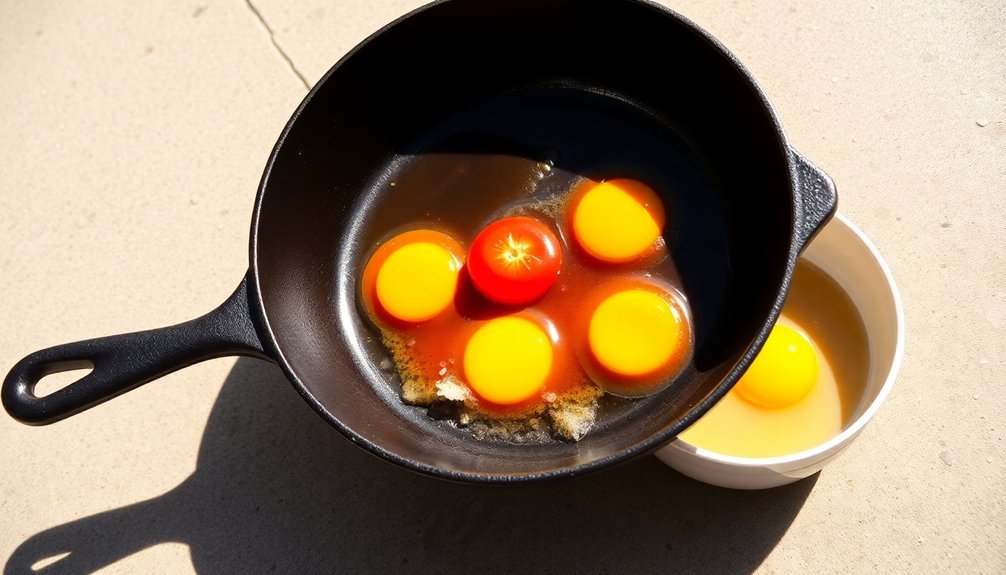
When it comes to sun-baked cooking, dark surfaces offer remarkable advantages that you'll want to harness. Dark pans, especially cast iron ones, excel at absorbing and distributing heat evenly throughout your dishes.
Similar to how Sunbasket's organic ingredients enhance meal quality, these pans make a noticeable difference in your cooking results.
You'll notice they maintain consistent temperatures longer than lighter-colored alternatives, which means you won't need to adjust your cooking setup as frequently.
These heat retention properties work to your benefit by ensuring your sun-baked meals cook thoroughly and uniformly. Whether you're searing vegetables or baking bread, the steady heat from dark surfaces helps achieve perfect textures and flavors.
You'll find that cast iron and anodized aluminum pans are particularly effective, as they withstand high temperatures while developing a natural patina that can enhance your food's taste over time.
Transforming Old Kitchen Cookware
Your kitchen cabinets likely hold a treasure trove of cookware perfect for sun-baked meals.
You'll find that stainless steel, cast iron, and carbon steel pans are ideal candidates for solar cooking due to their excellent heat retention properties. These durable materials can withstand repeated sun exposure without degrading. These versatile pans can handle high temperatures safely while maintaining consistent heat levels throughout cooking.
When you're choosing pans to repurpose, look for dark-colored surfaces that'll absorb sunlight effectively.
Cast iron and carbon steel pans, especially when well-seasoned, provide the perfect dark surface for solar cooking. If you've got enameled cookware, opt for pieces with dark interior surfaces.
You're not just recycling old cookware; you're giving these long-lasting pieces a second life. By repurposing your existing pans, you're also making an environmentally conscious choice that keeps functional items out of landfills.
Heat Retention Benefits
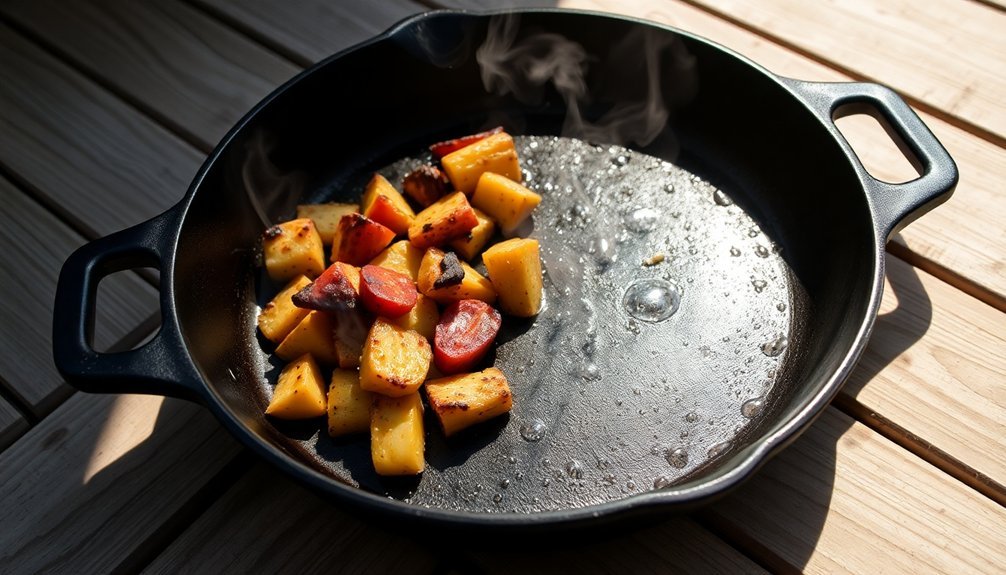
The exceptional heat retention properties of repurposed cookware make these pans ideal for solar cooking.
You'll find that cast iron and enameled cast iron pans are particularly effective due to their high density and thick construction, which maintain consistent temperatures during long sun-baking sessions.
If you're using stainless steel pans with aluminum or copper cores, you'll benefit from their even heat distribution and non-reactive properties, ensuring your sun-baked dishes cook uniformly.
Carbon steel options offer a lighter alternative while still providing excellent heat retention, making them perfect for quick-cooking solar meals.
The natural non-stick surfaces that develop in both cast iron and carbon steel pans also prevent food from sticking during the slower solar cooking process, while enameled versions offer the added convenience of easy cleaning. Traditional craftsmanship in vintage cast iron pieces often results in unique characteristics that enhance their heat absorption capabilities.
Seasoned Pans Cook Better
Properly seasoned pans transform sun-baking into a more efficient and flavorful cooking experience. You'll notice how your food releases easily from the non-stick surface, creating perfect crusts and caramelization even with solar heat. This natural coating, built up through layers of polymerized fats, enhances both cooking performance and taste.
When you're sun-baking, a well-seasoned pan's surface helps distribute heat evenly while imparting subtle flavors to your dishes. You won't need to use as much oil, making your solar-cooked meals healthier. The excellent heat retention of seasoned pans means your food will continue cooking even when clouds temporarily block the sun.
The seasoning also protects your pan from the elements, which is vital for outdoor cooking. If you maintain your pan's seasoning by avoiding soap and applying a thin oil layer after each use, you'll find that your sun-baked meals become increasingly delicious over time.
Choosing the Right Materials
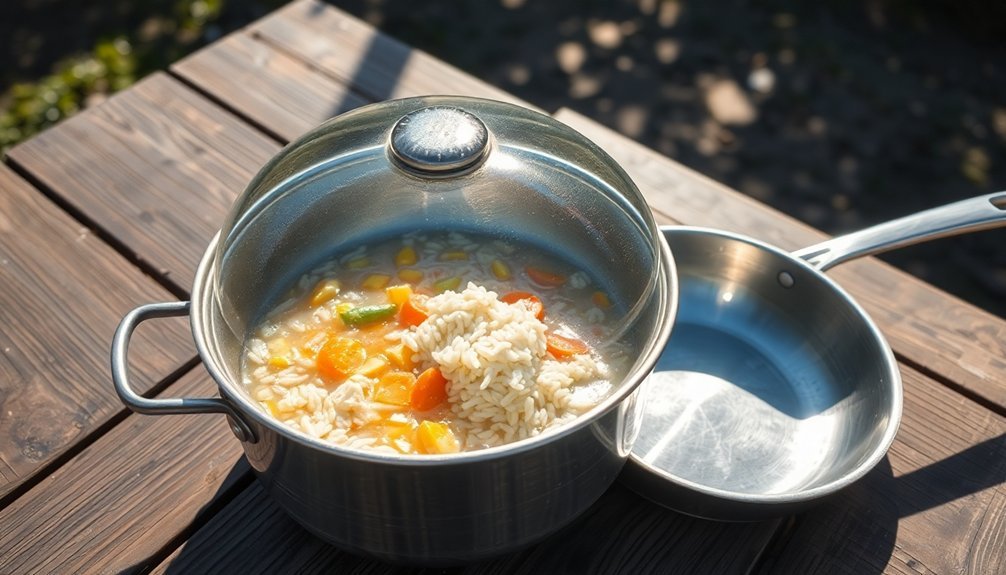
When selecting materials for sun-baking, durability and heat retention become essential factors in your success.
You'll find cast iron and enameled cast iron are your best options, as they excel at holding heat and can withstand intense temperatures. Cast iron improves with use, while its enameled counterpart offers easier maintenance and rust protection.
If you're looking for a lighter alternative, carbon steel provides excellent heat circulation and develops a natural non-stick surface once seasoned.
For eco-conscious cooks, recycled cast iron pans offer the same benefits as traditional ones while supporting sustainable practices. They're built to last, often coming with lengthy warranties and FSC-certified wooden handles.
Just avoid non-stick and ceramic options, as they're not suited for prolonged sun exposure and may deteriorate quickly.
Cost Savings Through Recycling
Making smart investments in recycled cookware can considerably reduce your long-term expenses while supporting environmental sustainability.
When you choose repurposed high-quality pieces like All-Clad stainless steel or Lodge cast iron, you'll eliminate the recurring costs of replacing cheaper alternatives.
The numbers speak for themselves: Organizations that switched to reusable equipment saved $3,000 in their first year and projected $23,000 over three years.
You'll also contribute to a 44% reduction in greenhouse gases and water consumption within the first year of use. This impact doubles to 88% over three years.
Sustainable Cooking Methods
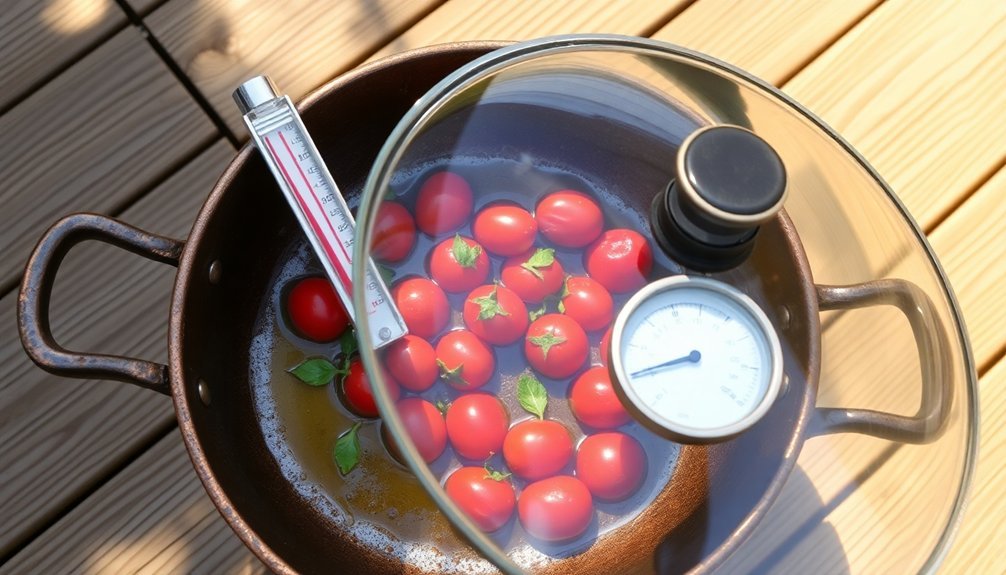
Sustainable cooking methods extend far beyond just selecting recycled cookware.
You'll maximize both environmental benefits and flavor by choosing local, seasonal ingredients that require less transportation and offer peak nutrition.
When you're preparing these ingredients, focus on whole-food usage to minimize waste and create additional value through stocks, broths, and creative recipes.
Make your cooking more sustainable with these practical approaches:
- Use high-efficiency appliances and energy-smart cooking techniques, like matching pan sizes to burners
- Select versatile cookware materials that distribute heat evenly, such as cast iron or carbon steel
- Practice proper maintenance of your cookware through seasoning and careful cleaning
Testing Your Repurposed Containers
Every repurposed container needs thorough testing before it can safely hold your sun-baked meals. You'll want to check your containers for chemical safety and physical durability.
Start by examining them for signs of corrosion, scratches, or surface damage that could leach harmful substances into your food.
Test your containers' compatibility with food by exposing them to both high temperatures and thermal shock. You'll need to verify they won't release toxic chemicals when heated in the sun.
If you're using metal containers, confirm they haven't been treated with restricted substances like BPA or harmful metals.
Don't forget to test the container's durability under various environmental conditions, as sun-baking exposes materials to intense heat and UV radiation.
Watch for any unusual reactions between your food and the container material.
Maximizing Solar Energy Absorption

Your pan's color plays an essential role in solar cooking success, with matte black surfaces absorbing up to 90% more heat than lighter or reflective ones.
You'll get better results by treating shiny pans with high-temperature black paint or seasoning them to create a dark, heat-absorbing finish.
If you're working with aluminum containers, consider roughening the surface slightly before darkening it to improve heat absorption and retention.
Dark Colors Capture Heat
When selecting the perfect pan for solar cooking, dark colors play an essential role in maximizing heat absorption. You'll get the best results using black pans since they absorb all wavelengths of light and convert them into usable heat energy.
Dark blue, brown, or dark green containers will also work effectively, though not quite as efficiently as black ones.
For ideal heat capture in your solar cooking setup:
- Paint your light-colored pans black or use dark-colored construction paper to wrap lighter containers
- Keep your pan's surface matte rather than glossy to prevent sunlight reflection
- Consider using multiple dark-colored containers nested together to increase heat retention
The darker surface of your pan works with the greenhouse effect created by your solar oven's transparent cover, helping trap and maintain cooking temperatures even during partly cloudy conditions.
Surface Treatment Benefits
Surface treatments can dramatically boost your solar cooking efficiency by maximizing the absorption of sunlight. You'll get better results by applying specialized coatings that reduce light reflection from 30% to as low as 2%. These treatments create multiple layers that capture more solar energy while minimizing heat loss.
| Treatment Type | Benefits |
|---|---|
| Anti-reflective | Reduces glare, increases light absorption |
| Nanostructure | Captures full spectrum, repels dirt |
| Selective absorber | Maintains high heat, low thermal loss |
When you treat your pan's surface correctly, you're not just improving its heat absorption – you're also making it more resistant to dirt and debris. The right coating helps trap infrared radiation while reflecting unwanted wavelengths, ensuring your pan maintains peak cooking temperatures. Modern surface treatments can even make your pan more durable against harsh outdoor conditions.
Best Pan Shapes
Selecting the right pan shape can make or break your sun-baked meal's success.
You'll want to focus on pans with rolled edges for easy handling and sharp corners for crisp, attractive results. When repurposing pans for solar cooking, consider both rectangular and round options to accommodate different recipes.
For peak sun-baking results, look for these key features:
- 8×8 inch pans with 2.25-inch depth for brownies and small batches
- 15×21 inch sheet pans for roasting vegetables without crowding
- Round pans with sloped, crevice-free corners for easy cleaning
If you're using glass pans, remember they'll heat faster than metal ones.
While you won't need handles in a solar oven, rolled rims are essential for safe, secure movement of your dishes during cooking.
Temperature Control Tips
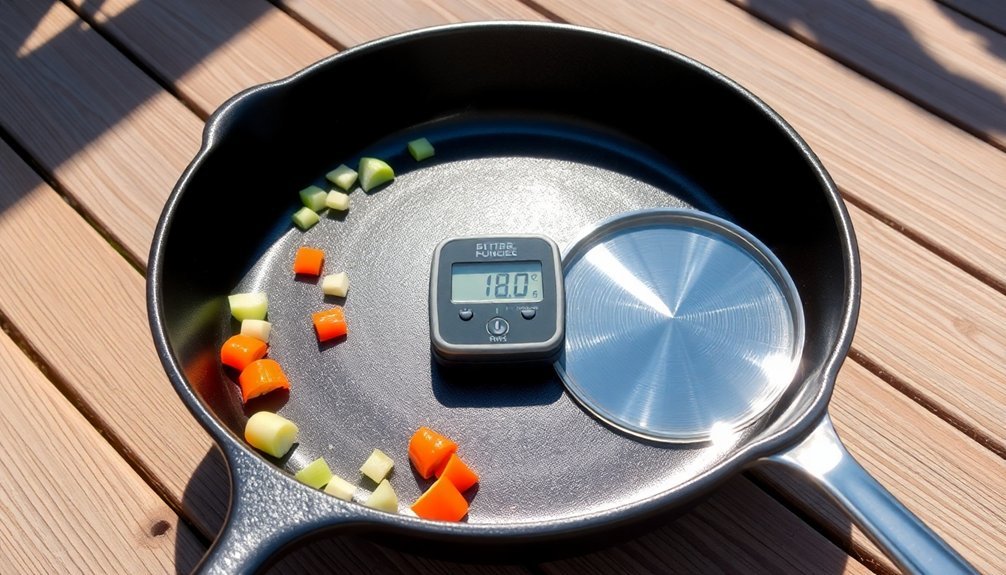
Place your repurposed pans in the center of the solar oven to guarantee even heat distribution and ideal temperature control.
You'll get the best results by using dark-colored pans, as they absorb more heat than shiny surfaces, which can reflect valuable sunlight away from your food.
Monitor your cooking temperature by positioning pans with taller sides toward the back of the oven and shorter items in front, allowing you to stack multiple dishes while maintaining proper heat flow.
Optimal Pan Placement
When maximizing your solar oven's performance, proper pan placement plays an essential role in temperature control.
You'll need to position your pots and pans on the dual-purpose leveling rack rather than directly on the oven floor. This setup guarantees vital airflow around and beneath your cookware for even heat distribution.
For ideal results, make sure to:
- Center your cookware on the rack with the side arms bent outward and secured on the threaded rods
- Monitor and adjust the oven's position using the E-Z Sun-track indicators
- Keep a small vent space between the glass and gasket to prevent condensation
Heat-Absorbing Surface Selection
The right surface material for your solar cookware can make or break your sun-baked meal's success.
You'll want to choose pans with dark, matte surfaces that maximize heat absorption while minimizing reflection. Cast iron and black-coated stainless steel are excellent choices for their superior heat retention.
If you're repurposing aluminum pans, consider applying a dark, heat-absorbing coating to enhance their performance.
The thickness of your pan matters too – heavier materials will distribute heat more evenly and maintain consistent temperatures.
Remember to monitor your cookware's temperature using a thermometer, and adjust sun exposure as needed.
You can regulate heat by positioning your pan at different angles or temporarily moving it out of direct sunlight when temperatures climb too high.
Cleaning and Maintenance
Maintaining your repurposed pans requires specific cleaning methods based on their material composition.
For stainless steel pans, you'll want to use non-steel abrasives and avoid acidic cleaners that could damage the surface.
If you're working with cast iron, stick to gentle cleaning with soft sponges and always re-season after thorough cleaning to prevent rust.
When dealing with non-stick surfaces, you'll need to be extra careful to preserve the coating:
- Never use metal scrubbers or abrasive tools
- Clean with gentle soap and warm water only
- Dry thoroughly with a microfiber cloth
For any burned-on residue, try boiling water with dish soap first before attempting more aggressive cleaning methods.
Remember to replace any non-stick pans if you notice peeling or significant wear on the coating.
Frequently Asked Questions
Can Repurposed Pans Be Safely Used to Sterilize Medical Equipment?
You shouldn't use repurposed pans to sterilize medical equipment. They can't meet strict regulatory standards, won't maintain proper temperature control, and could introduce contamination that puts patients at serious risk of infection.
What Metals Should Be Avoided When Selecting Pans for Solar Cooking?
You'll want to avoid shiny, reflective metals like stainless steel and copper, aluminum due to reactivity, and heavy thick metals. Don't use white cookware, non-stick coatings, or ceramic pans for solar cooking.
How Do Different Weather Conditions Affect the Lifespan of Repurposed Cookware?
You'll find that high temperatures can warp your pans, while humidity promotes rust. Thermal shock from rapid temperature changes can crack ceramic coatings. Store your repurposed cookware in dry conditions to extend its life.
Will Electromagnetic Properties of Certain Metals Impact Food Safety?
You'll need to watch out for metals' electromagnetic properties, as they can affect food safety. Some metals can leach into food when heated, while others might interfere with proper cooking temperatures and contamination detection.
Can Magnetic Cookware Interfere With the Solar Cooking Process?
No, you don't need to worry about magnetic cookware interfering with solar cooking. The process relies entirely on solar radiation and heat transfer – magnetic properties of your pots and pans won't affect how your food cooks.
In Summary
You'll find that repurposed cookware is ideal for sun-based cooking, especially when using dark, well-seasoned pans that absorb heat efficiently. By selecting the right materials and shapes, you're able to maximize solar energy absorption and maintain steady temperatures. Keep your converted pans clean and well-maintained, and you'll create delicious sun-baked meals while giving your old cookware a sustainable second life.
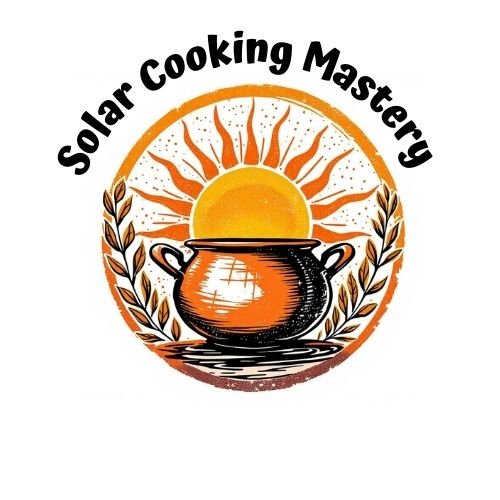
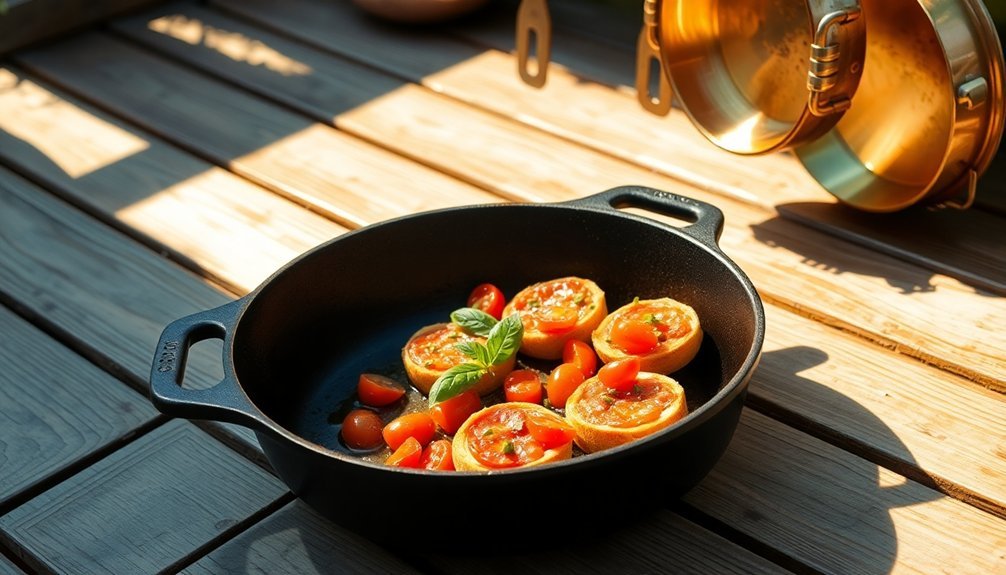
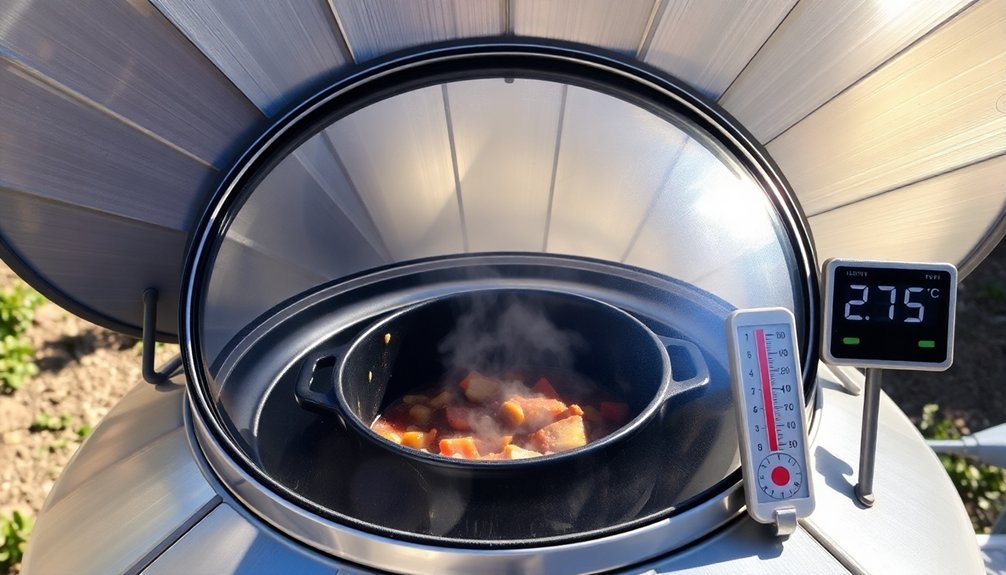
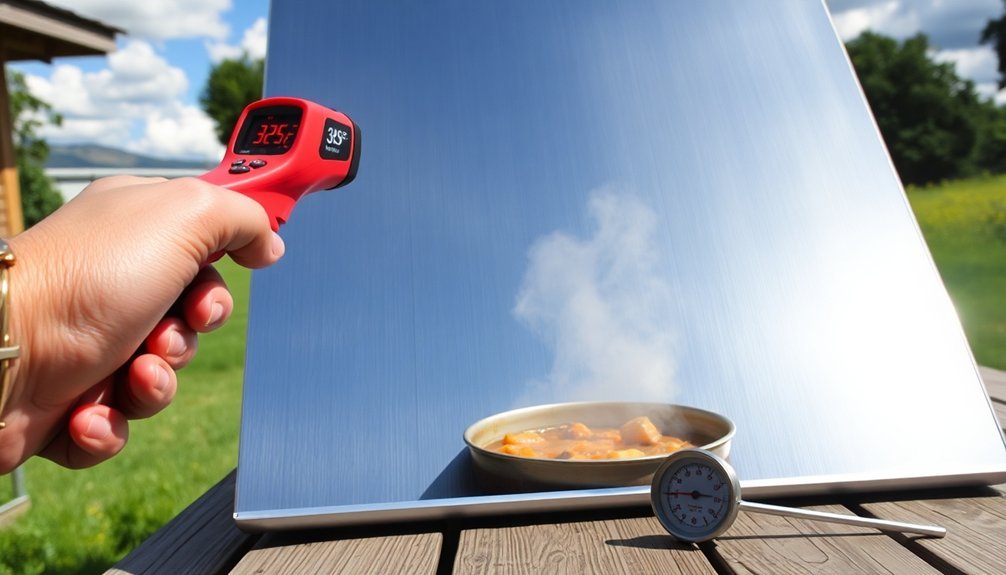
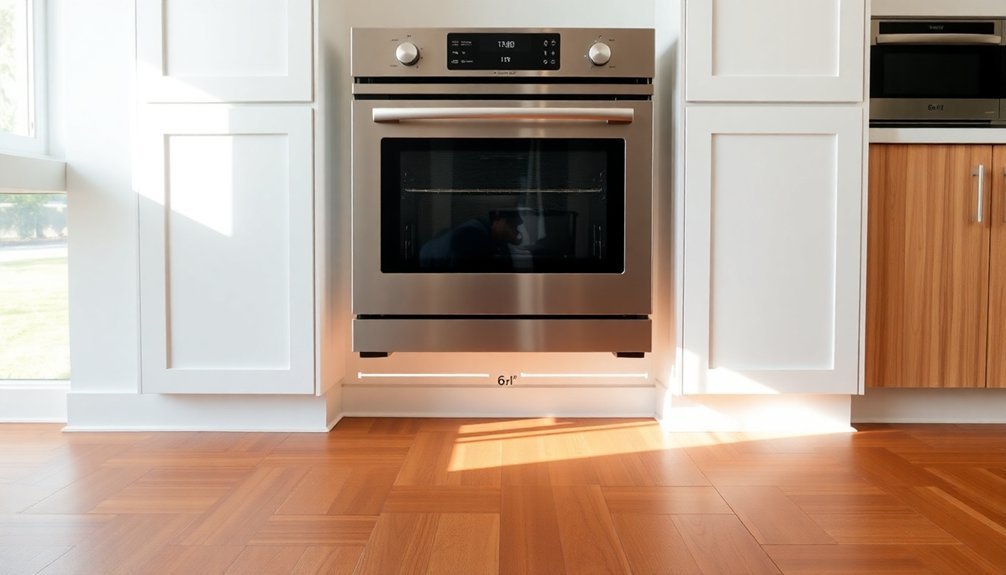
Leave a Reply